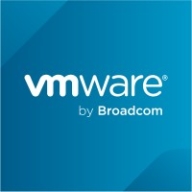

Teradata and Spring Cloud Data Flow compete in the data management and orchestration space. Teradata seems to have the upper hand in performance capabilities, while Spring Cloud Data Flow offers strong real-time streaming and integration features.
Features: Teradata provides a robust data warehousing solution with parallel processing architecture and scalability. It offers a strong optimizer and workload management for enhanced system tuning, along with adaptability to various data environments. Its security features are well-regarded. Spring Cloud Data Flow excels in real-time streaming and orchestration capabilities. It boasts an easy integration with other services and has a user-friendly programming model. Its flexible deployment environment and ability to handle microservices are significant advantages.
Room for Improvement: Teradata users suggest improvements in transaction processing and integration with modern cloud environments. Enhancements in handling unstructured data and more competitive pricing structures are needed. Spring Cloud Data Flow could benefit from a better user interface and stronger community support. Enhancing documentation clarity and expanding support for more languages and tools would be beneficial.
Ease of Deployment and Customer Service: Teradata is primarily deployed on-premises but offers cloud options with robust support, though response times could see improvement. Spring Cloud Data Flow offers hybrid deployment flexibility and is known for strong customer service. Both offer reliable technical support, with Teradata receiving positive feedback for its extensive services through Teradata University.
Pricing and ROI: Teradata is recognized for high performance at a premium price, delivering significant ROI through improved analytics and system speed. Recent pricing models are becoming more flexible but may still be prohibitive for smaller projects. Spring Cloud Data Flow, as an open-source solution, reduces initial investment costs, offering value through its free-to-use model. Teradata justifies its price with powerful features, while Spring Cloud Data Flow provides a cost-effective solution for data stream management.
| Product | Market Share (%) |
|---|---|
| Teradata | 0.8% |
| Spring Cloud Data Flow | 1.2% |
| Other | 98.0% |


| Company Size | Count |
|---|---|
| Small Business | 3 |
| Midsize Enterprise | 1 |
| Large Enterprise | 5 |
| Company Size | Count |
|---|---|
| Small Business | 26 |
| Midsize Enterprise | 12 |
| Large Enterprise | 49 |
Spring Cloud Data Flow is a toolkit for building data integration and real-time data processing pipelines.
Pipelines consist of Spring Boot apps, built using the Spring Cloud Stream or Spring Cloud Task microservice frameworks. This makes Spring Cloud Data Flow suitable for a range of data processing use cases, from import/export to event streaming and predictive analytics. Use Spring Cloud Data Flow to connect your Enterprise to the Internet of Anything—mobile devices, sensors, wearables, automobiles, and more.
Teradata is a powerful tool for handling substantial data volumes with its parallel processing architecture, supporting both cloud and on-premise environments efficiently. It offers impressive capabilities for fast query processing, data integration, and real-time reporting, making it suitable for diverse industrial applications.
Known for its robust parallel processing capabilities, Teradata effectively manages large datasets and provides adaptable deployment across cloud and on-premise setups. It enhances performance and scalability with features like advanced query tuning, workload management, and strong security. Users appreciate its ease of use and automation features which support real-time data reporting. The optimizer and intelligent partitioning help improve query speed and efficiency, while multi-temperature data management optimizes data handling.
What are the key features of Teradata?In the finance, retail, and government sectors, Teradata is employed for data warehousing, business intelligence, and analytical processing. It handles vast datasets for activities like customer behavior modeling and enterprise data integration. Supporting efficient reporting and analytics, Teradata enhances data storage and processing, whether deployed on-premise or on cloud platforms.
We monitor all Data Integration reviews to prevent fraudulent reviews and keep review quality high. We do not post reviews by company employees or direct competitors. We validate each review for authenticity via cross-reference with LinkedIn, and personal follow-up with the reviewer when necessary.